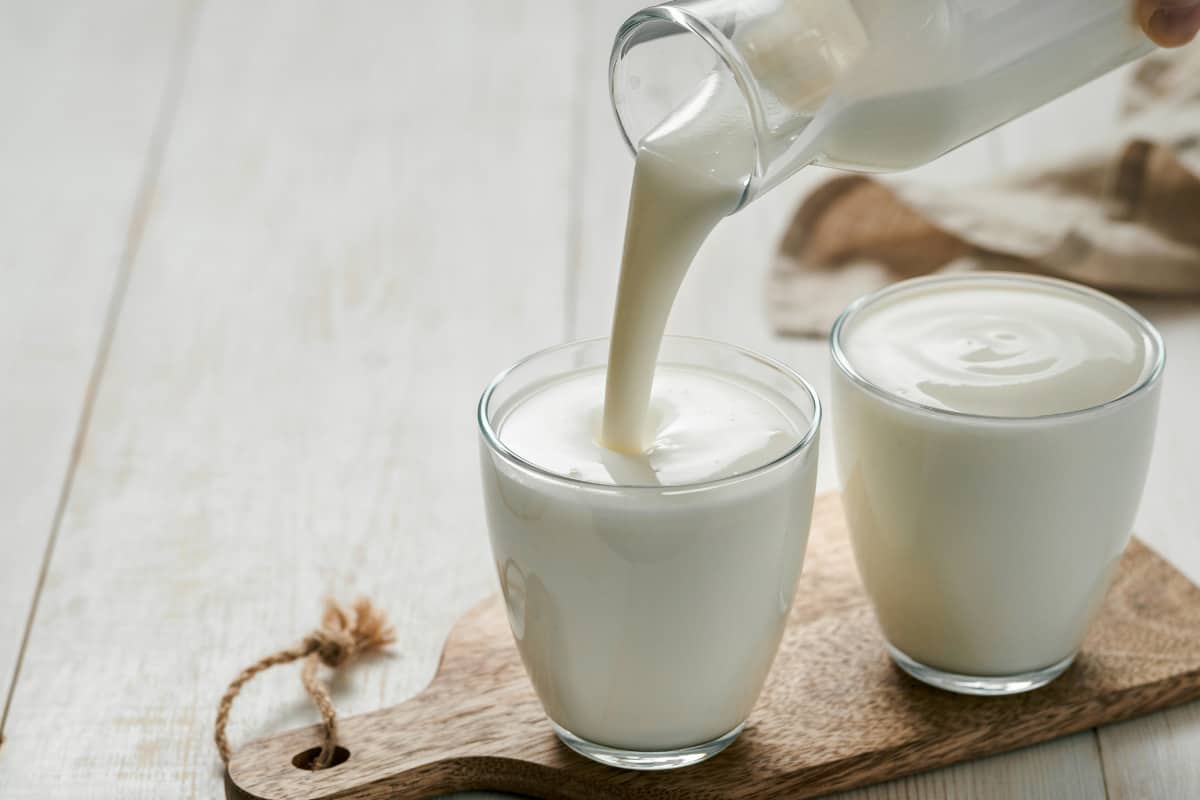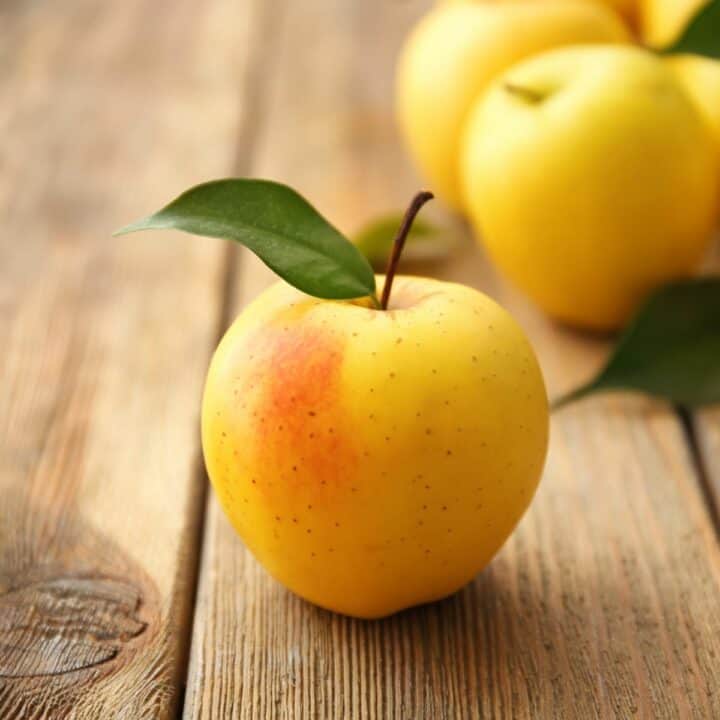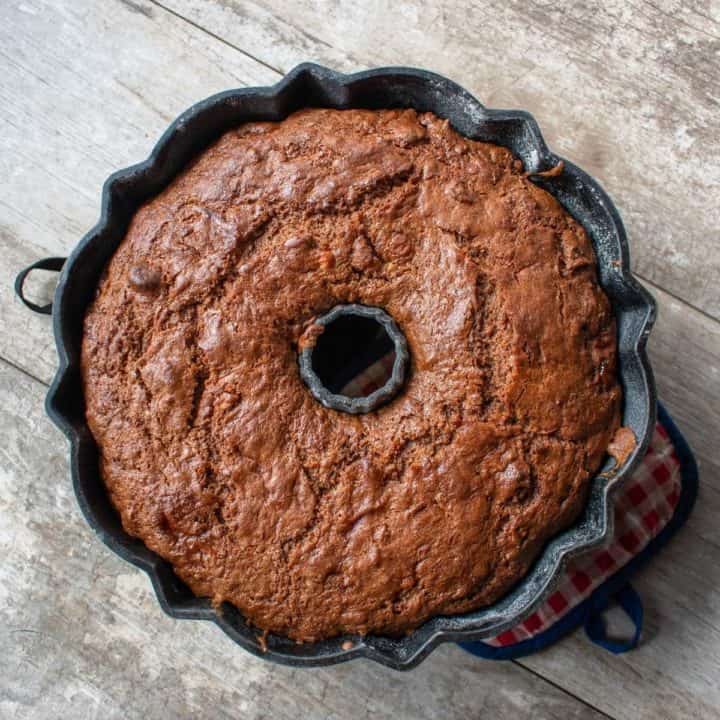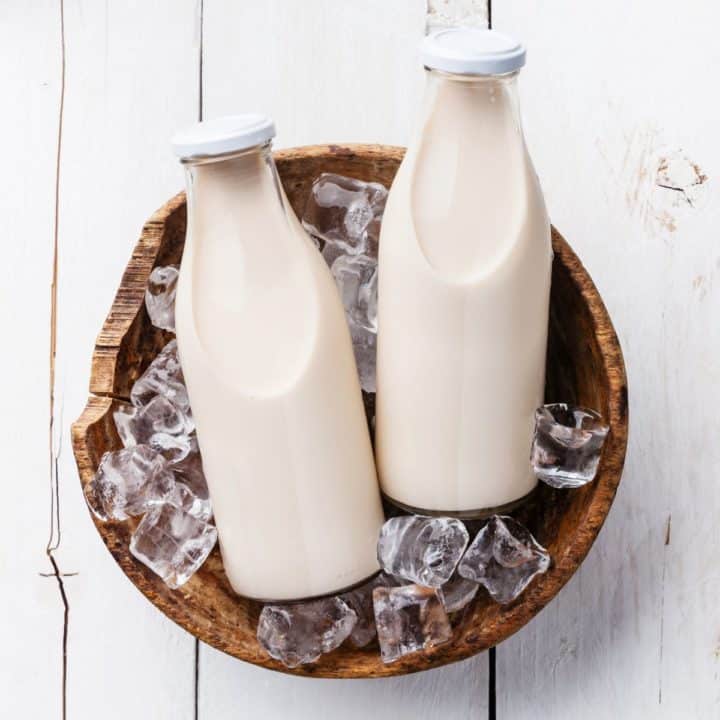If you’ve never used buttermilk before, you may be wondering, “what does buttermilk taste like?” This liquid is used for many different purposes in the kitchen, including baked goods and a flavorful marinade. You’ll love all the ways you can use buttermilk in your own kitchen.

Jump to:
What does buttermilk taste like?
What does buttermilk taste like? It’s creamy and slightly tangy, and it’s perfect for adding to your dishes or drinking from a glass.
What is buttermilk?
If you’re wondering whether buttermilk is a combination of milk and butter, you’d be wrong.
Buttermilk was originally made from the liquid left after churning butter out of cultured cream.
Today dairy companies make it by combining whole or low-fat milk with a bacteria culture and heating it. It’s left to ferment for 12 hours. This is why it’s slightly tangy and thicker than ordinary milk.
It contains more protein and less fat than regular milk, and it’s high in calcium, potassium, and vitamin B12. Also, since buttermilk is cultured, it’s more easily digestible for those sensitive to lactose, like yogurt.
- Flavor: It’s slightly tangy on your tongue.
- Texture: The texture is creamy and thick.
- Smell: It has a unique smell, like tangy milk.
- Color: Buttermilk is white or cream-colored liquid.
Does buttermilk smell sour?
Buttermilk has a distinct tangy smell, but it’s not sour. You’ll be able to tell the difference if you take a big whiff of the liquid after opening the bottle and allowing it to breathe for a few seconds.
If you smell it right after opening the bottle or carton, it smells different when you wait for a minute. This is because the gasses collected in the container smell stronger than the actual buttermilk.
How long does buttermilk last?
Buttermilk lasts for about two weeks after opening the container, and this is because it’s a cultured product and the live bacteria keep it fresh longer.
You can keep an unopened container for up to three months in the refrigerator.
If you aren’t planning to use the entire buttermilk container at once, you can certainly freeze it to use later. The best way to do this is to pour it into an ice cube tray and when the cubes are frozen, move them to a large freezer bag to store.
You can keep it in the freezer for up to three months. To thaw, let it sit in the refrigerator for a few hours or gently microwave and stir until it’s defrosted enough to use.
Does buttermilk go bad, and how to tell?
Buttermilk can go bad if left out of the refrigerator or even in the refrigerator for too long. You’ll notice a few things when you open the container.
It will smell and taste too sour, it may be chunky, and you may see mold growth around the lid after opening it or on the sides of the insides of the container.
How to use buttermilk in cooking and baking?
This liquid gold is used in many different types of recipes. Since buttermilk is cultured, it’s terrific at making chicken moist and tender when used as a marinade.
It’s also perfect in cookies, cakes, pancakes, and biscuits because it makes them tender and soft.

This happens because buttermilk produces carbon dioxide when combined with baking soda, which creates air pockets and makes the food rise.
How to make your own buttermilk at home?
If you want to make your own buttermilk at home, you can easily do so! This way will create an acidic dairy product that you can use as a buttermilk substitute.
The basic steps to do this are to add acid to a dairy product and let it sit for 5 to 10 minutes. It will have small lumps, and this is normal.
- Dairy: Whole milk, low-fat milk, soy milk, almond milk, sour cream, or yogurt
- Acid: Lemon juice or white vinegar
Conclusion: What does buttermilk taste like?
Buttermilk is a cultured dairy product that tastes tangy, creamy, and thick. You can buy it at most grocery stores in the dairy section.
You can keep opened buttermilk in the fridge for up to two weeks and unopened buttermilk for up to three months.
Buttermilk is used to tenderize cakes, pancakes, biscuits, and a marinade for chicken.
You can also make it at home using a dairy product like milk and combining it with acid like lemon juice.





Comments
No Comments